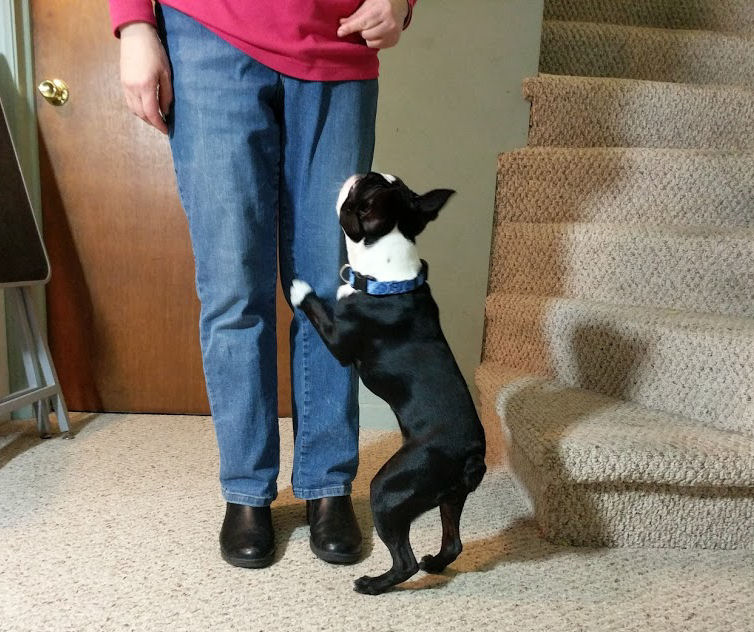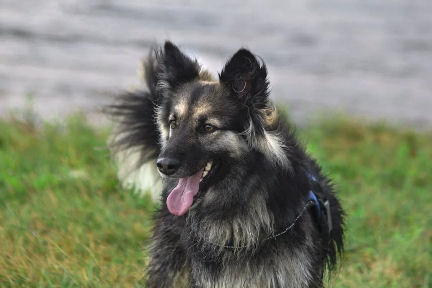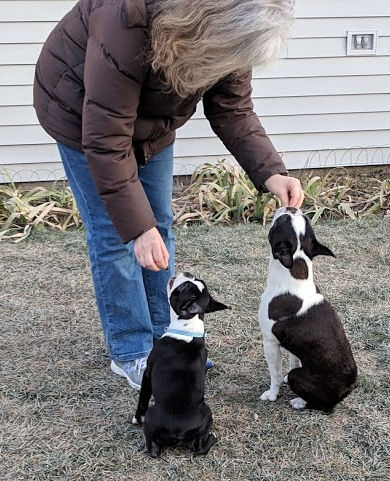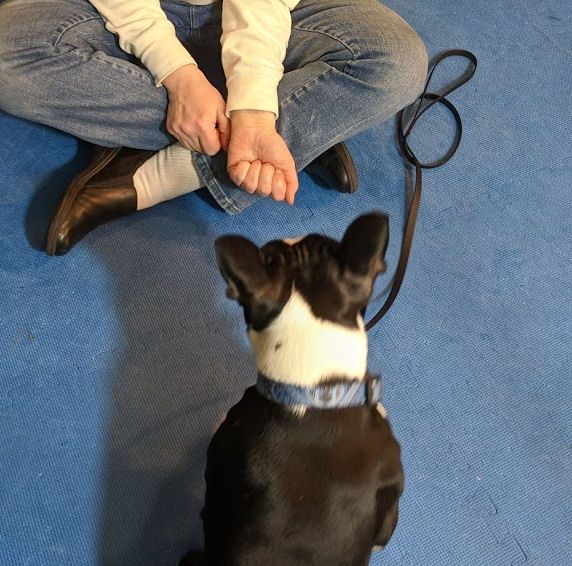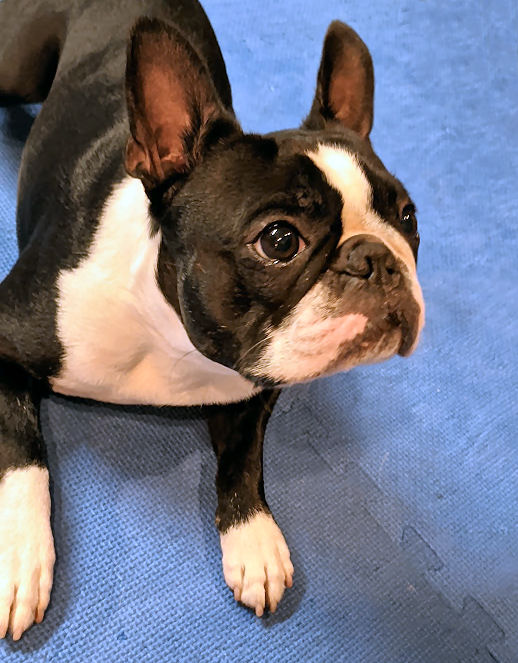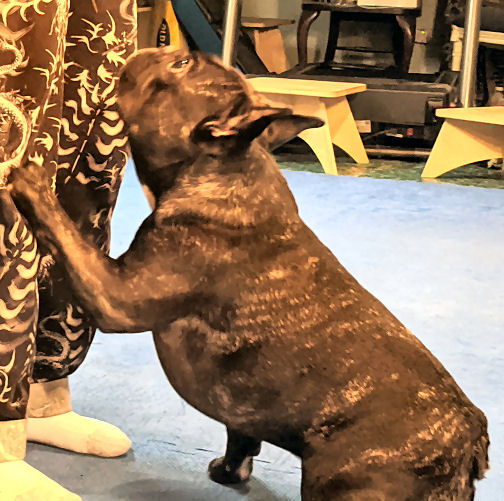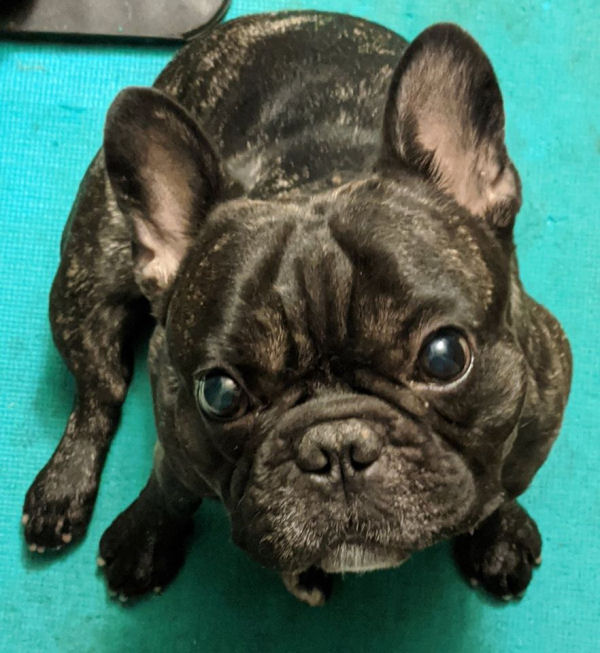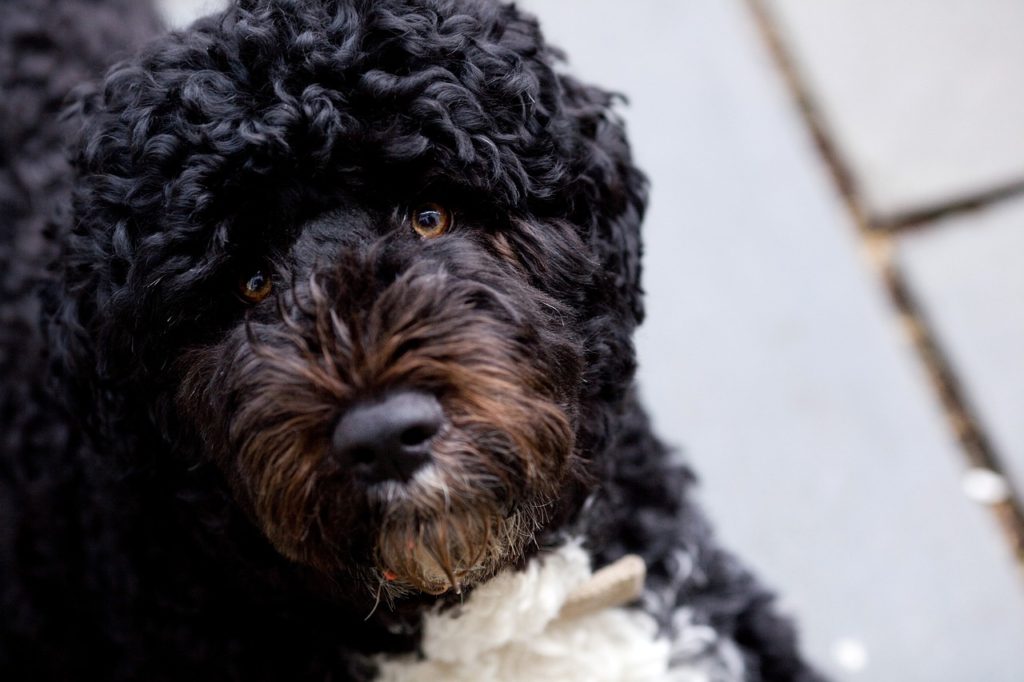
It’s the biggest joy. That “Aha!” moment in dog training that happens when the dog gets it and the dog’s owner sees it. When the team comes together in understanding that they can trust each other, work together, and achieve more than they ever imagined.
We got to see it just this week. This person has had dogs for years. She’s followed lots of different dog trainers and tried all different methods of dog training. And in one single session, she saw her dog change, think, learn, and grow. It was kind of wonderful to be part of it.
Let them think
We wish that these amazing training moments were video-worthy. But they’re not. It’s one of those things where you absolutely have to be there to realize something special is going on.
This person really, really wants her dog (a Portuguese Water Dog) to play the “Put Your Toys Away” game. The first step is to set something not-very-valuable to the dog on the floor. And stare at it. At first, the dog either bothers the hand with the treats, nudges the clicker hand, tries licking or whining to get the action started. The owner and I just wait, staring at the “thing.” In this case, it was an antler chew toy, which the dog doesn’t particularly like. Eventually, in his bid to make something happen, the dog accidentally touches the antler with his paw. Click, cookie near the antler.
The dog sits back and stares at us. What just happened? What did I do to get that treat? You can absolutely see the wheels turning in the dog’s brain. We go back to staring at the antler. The dog gets up and tries it again, licking, whining at the treat hand. Nothing. Turns and looks at the antler and slaps it. Click, cookie by the antler.
The “Aha!” moment in dog training arrives. The dog is starting to make the connection. Slap the antler, get a cookie. We’re over our three minutes by then, but the owner wants to keep going.
Next step
After three times pawing at the antler and getting rewarded, we know the dog has figured out that getting the treat has something to do with that object he doesn’t really care about. But he does care about getting treats. For the next step, to encourage growth of the game, we stop rewarding for using his paw. We’re looking for him to use his mouth to pick up the antler.
We could see him get a little frustrated – what worked before isn’t working now. Again, he sits back on his haunches. You can see him thinking. And he comes back to try something else. He mouths the antler! Click and reward. He does it again! Click and reward.
At this point, we’re well over the time threshold and call it a day. The next step will be getting him to hold the antler. Then move while holding it. Then take it to a basket or toy bin. Then drop it. Each little step matters. Some dogs will get it right away. Others may still be at the starting line. But, with your patience, every single dog will experiment to see what gets the reward.
When they know, they know
When you have a dog that’s accustomed to trying new things, thinking of solutions, and experimenting, you have a phenomenal companion and partner. Dogs become more confident, more social, better-behaved, and much more fun. And while the behaviors you learn together may go viral, the process isn’t exciting. Mostly what you’re doing is watching and waiting. The result is worth it. The owner, attuned to her dog, had an “Aha!” moment of her own. It was the first time she’d seen him think, solve, and grow before her eyes.


